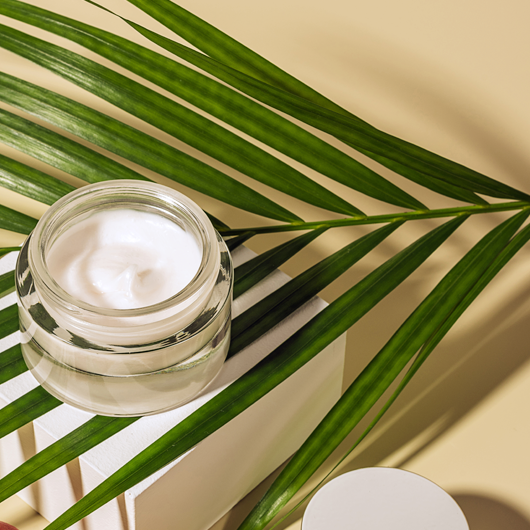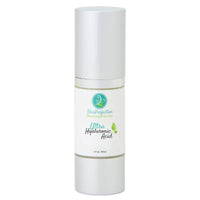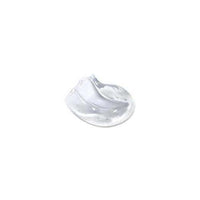Sensitive or rosacea
Sensitive Skin Simplified: A Gentle Guide to Caring for Delicate Skin
So, you've got sensitive skin. A complexion that sometimes feels like it has its own set of mood swings. Don't fret. Dive into the delicate world of sensitive skin and learn the beauty, the challenges, and the care it truly deserves.
Sensitive Skin: The Basics
Sensitive skin is like a delicate flower - beautiful but easily affected by the elements. Simply put, skin is more reactive to products or environmental factors. Signs include redness, burning, itching, or dryness.
The Beauty and Challenges of Sensitive Skin
Upsides:
- Natural Indicator: Your skin is the early warning system. If something's wrong, your skin will let you know, allowing you to make changes promptly.
- Gentle Products: Being limited to gentler products can mean fewer harsh chemicals on your skin.
Downsides:
- Reactivity: Common products, fragrances, or even the weather can lead to reactions.
- Careful Choices: Every new product requires a patch test; sometimes, even tried-and-tested products can suddenly cause a flare-up.
Sensitive Skin's Evolution With Age
As with all skin types, sensitive skin does not remain stagnant.
As we age:
- Increased Dryness: The skin can become drier, leading to heightened sensitivity.
- Thinner Skin: Our skin thins with age, which may increase irritant vulnerability.
- Age-Related Issues: Aging skin might be sensitive and show signs like fine lines or age spots.
Crafting the Perfect Skincare Routine for Women with Sensitive Skin
For women with sensitive skin, finding the right skincare routine can feel like navigating a minefield. Sensitive skin is reactive and prone to irritation, redness, and sometimes even painful reactions, making the selection of skincare products a critical process. Understanding the triggers and learning how to carefully introduce new products can transform this challenging skin type into a manageable and even radiant complexion.
Identifying Irritants and Triggers
Several common irritants can trigger sensitive skin reactions, including synthetic fragrances, harsh chemicals, alcohol, and even some natural ingredients like essential oils. These substances can disrupt the skin's natural barrier, leading to inflammation, redness, and discomfort. It's crucial for individuals with sensitive skin to scrutinize product labels and avoid known irritants.
The Magic Number: Five Ingredients or Less
One of the golden rules for sensitive skin is to opt for products with five ingredients or less. This minimalist approach minimizes the risk of irritation, as fewer ingredients mean fewer potential triggers. Simple formulations are often more transparent, making it easier to identify and avoid irritants.
Introducing Products One at a Time
When incorporating new products into your skincare regimen, patience is key. Introducing one product at a time allows you to monitor your skin's reaction over several days. This cautious approach helps identify any adverse reactions and pinpoint the specific ingredient causing the issue.
The Importance of Patch Tests
Patch testing is a non-negotiable step for those with sensitive skin. Before applying a new product all over your face, apply a small amount behind your ear or on your inner forearm. Wait 24 to 48 hours to assess any potential reactions. This simple practice can save you from significant discomfort and skin setbacks.
Why DIY Skincare Suits Sensitive Skin Best
DIY skincare emerges as an ideal solution for those with sensitive skin. Crafting your own skincare allows complete control over the ingredients, ensuring that only those known to be safe and beneficial for your skin are included. This personalized approach caters precisely to your skin's needs without the risk of unnecessary or harmful additives.
The Advantage of Fragrance-Free Bulk Bases
Our DIY bulk bases, which are fragrance-free, offer a solid foundation for creating custom skincare formulations. These bases can be personalized with specific anti-aging ingredients and peptides that cater to your skin's unique needs without the risk of irritation from unnecessary fragrances or fillers. This customization ensures that your skincare is not only safe but also effectively addresses your concerns, such as hydration, elasticity, or fine lines.
The Magic of Minimal Ingredients
Sensitive skin often thrives on simplicity.
Here's why:
- Less is More: Fewer ingredients mean fewer potential irritants. The less complicated a product, the less likely it is to cause a reaction.
- Transparency: With fewer components, you know exactly what's applied to your skin.
DIY Skincare with a Hyaluronic Acid Base
Hyaluronic acid (HA) occurs naturally, allowing our skin to retain moisture.
Using it as a DIY base is genius because:
- Gentle Hydration: HA provides hydration without oils or heavy ingredients, making it less likely to irritate sensitive skin.
- Personalization: Making your own serum lets you pick and choose ingredients tailored to your skin.
DIY Anti-Aging Serum for Sensitive Skin
Ingredients:
1 teaspoon of pure hyaluronic acid powder
7 tablespoons of distilled water
1 drop of pure vitamin E oil (a natural preservative and skin conditioner)
Procedure:
In a clean bowl, dissolve the hyaluronic acid powder in distilled water. Mix until fully dissolved.
Add the drop of vitamin E oil and stir.
Transfer the mixture into a sterilized glass dropper bottle.
Store in a cool, dark place.
Use a few drops to the face after cleansing, morning and night.
Special Care for the Sensitive Souled Skin
- Patch Test: Before using a new product, always test a small amount on your inner forearm for a few days.
- Soothing Ingredients: Look for calming components like chamomile or aloe vera.
- Avoid Known Irritants: Fragrance, alcohol, and some preservatives can be challenging for sensitive skin.
- Sun Protection: A must-have. Opt for sunscreens designed for sensitive skin.
- Consult a Dermatologist: If you need clarification on a product or a reaction, always consult a professional.
In conclusion, sensitive skin, while delicate, can glow and thrive with the proper care and attention. Embrace its uniqueness and treat it with the gentleness it deserves.
Anti-Aging Routine for Sensitive Skin
If you have sensitive skin, you already know that you have it. You probably have skin sensitivities if you react to any new skincare product with redness or bumps. Even trying a new moisturizer, cleansing, makeup, or just getting ready for your day in a different order than you usually do can create problems. It may not even be that the new products that you are using contain anything harmful.
You could switch to calming or natural products containing no artificial chemicals. Even using a product with ingredients proven suitable for all skin types, you may still develop redness simply because your skin is sensitive. It may be an allergy, but it may simply be prone to redness and irritation, unlike normal skin, resilient to change and new products.
Anyone can have sensitive skin, but it is most common in young children, teenagers, and mature women. Some people are born with sensitive skin; others develop it over time, like an allergy. Young children are likely to have sensitive skin because their skin has not yet become hardy enough to deal with the environmental pollutants they may encounter.
Sensitive Skin and Changing Hormones
Teenagers often develop it as their hormones begin to change. Then, the aging process sets in for mature women; the complexion starts to get thin, and skin sensitivities can develop.
Sensitive skin may result from genetics, which can be particularly frustrating for women who struggle with this issue. Finding a skincare routine that works without irritating the skin can make it challenging. However, other women develop sensitive skin over time due to the products they use. If you use many products containing caustic chemicals, your skin's natural defenses may break down over time. As you continue to use those products, your skin will become more prone to breakouts, rashes, and blemishes.
Though you cannot change sensitive skin, it is now easy to find products that will not irritate even the most sensitive skin. Look for all-natural and soothing effects, and ensure they do not contain anything your skin is allergic to. You may find that some redness persists even as you switch to these new products, but hold out. First, your skin will become used to the product, and then it will become healthier as it has the chance to achieve balance.
Rosacea and Sensitivities
Even though sensitive skin and rosacea are different, they still need attention. The same principles hold for both skin types. Use products with simple ingredients and the least amount of chemicals and preservatives possible. When trying new products, do not introduce more than one skincare product a week. This way, you can tell whether or not that product will work with your skin. Products designed for sensitive skin usually are appropriate for those with rosacea.
Some women who believe they have naturally red skin or a chronic rash have rosacea. This skin disorder occurs in many women across all skin types and races. Four types of rosacea may develop in conjunction or separately, depending on the woman and her body. It is characterized by flare-ups, which occur over time. Sometimes, the face is less red than others, and other times, the rosacea will be very severe.
Types of Rosacea
There are four types of rosacea, from mild to severe, which affect other parts of the face with various intensities. The most common kind is the mildest, which manifests as either a constant redness or an increased tendency to become flushed or red in the face. This type of rosacea may also include the appearance of blood vessels under the skin.
Acne and redness characterize the second type. Women with this kind of rosacea may experience acne well into their mature years and may not react well to the most common forms of acne reduction.
The third subtype is skin thickening. The skin becomes thick and rough in the affected area, found on the nose or cheeks. Some areas may be thicker, red, or blotchy.
The fourth and final type affects the eyes, making them red and watery, even if the person suffering from this type of rosacea has no history of allergies.
Rosacea and Thirty Somethings
Rosacea is most common in women after the age of thirty. It usually begins with the first type of rosacea, a mild redness, and then develops into one of the other rosacea as we age. It is sporadic for women to develop rosacea before thirty, which is most likely a genetic disorder.
Rosacea can be difficult to diagnose and treat, as it manifests in many ways. However, some women with severe rosacea have had some success with laser treatments and antibiotics. In general, however, most women prefer to cover the redness as best they can. A natural concealer with a green tint is preferred to neutralize and cover redness. In addition, a green concealer coverup can counteract the redness on the face. Thus allowing for a more natural look under the foundation. Whatever products you choose, ensure they are natural and do not further irritate the skin.
Tips for Using New Products with Rosacea
Skin Care Tip - Introduce one new product at a time if you are sensitive or have rosacea. Try the new product for one week to ensure your skin is compatible with the latest product.
An age-defying skincare routine for sensitive or rosacea skin:
Morning:
Foaming Peptide Cleanser
Essential Eye Cream
Hyaluronic Acid
Peptide Fusion
Essential Moisturizer
Night:
Foaming Peptide Cleanser
Essential Eye Cream
Hyaluronic Acid
Peptide Fusion
Essential Moisturizer
Specific Concerns
Click the link below to determine what products will work for specific skin concerns.
Crows Feet
Dark Circles
Dull Complexion
Expression Lines
Hyperpigmentation
Large Pores
Laugh Lines
Lip Lines
Sagging Neck and Jowl Areas
Under-eye Bags and Puffiness
Wrinkles
Conclusion
Navigating the world of skincare for sensitive skin doesn't have to be daunting. By understanding the potential irritants, embracing a minimalist approach, and cautiously introducing new products, you can create a skincare routine that respects and nourishes your sensitive skin. DIY skincare, supported by our fragrance-free bulk bases, offers a tailored solution that minimizes risks while maximizing the benefits, allowing you to enjoy a healthy, glowing complexion.
References:
Natural Organic Skincare. (n.d.). 5 Essential Skincare Tips for Sensitive Skin. Retrieved from https://www.naturalorganicskincare.com/blogs/category/5-essential-skincare-tips-for-sensitive-skin
This approach to sensitive skincare empowers individuals to take charge of their beauty routines, ensuring their skin receives only the best, most suitable care.
Farage, M. A., Katsarou, A., & Maibach, H. I. (2013). Sensitivity of the skin: perceptions and reality. International Journal of Cosmetic Science, 35(3), 220-226.
Rawlings, A. V. (2007). Ethnic skin types: Are there differences in skin structure and function? International Journal of Cosmetic Science, 28(2), 79-93.
Eberlein-König, B., Schäfer, T., & Huss-Marp, J. (2000). Skin surface pH, stratum corneum hydration, trans-epidermal water loss, and skin roughness related to atopic eczema and skin dryness in a population of primary school children. Acta Dermato-Venereologica, 80(3), 188-191.
Vaughn, A. R., Branum, A., & Sivamani, R. K. (2019). Effects of Turmeric (Curcuma longa) on Skin Health: A Systematic Review of the Clinical Evidence. Phytotherapy Research, 33(8), 1992-2005.




